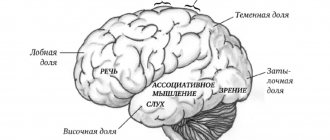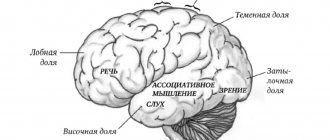Updated July 20, 2021 888 Author: Dmitry Petrov
Hello, dear readers of the KtoNaNovenkogo.ru blog. Knowledge has always been considered one of the key indicators of human intelligence and the main sign of education.
But isn't it much more valuable to have the ability to put them into practice to make life easier? Or, at least, convince your opponent that you are right.
However, in some cases you can know nothing about a particular subject or be completely wrong and still win the argument - the sophists proved this long ago!
History of the term
Sophisms and paradoxes have been noticed since ancient times. One of the fathers of philosophy, Aristotle, called this phenomenon imaginary evidence that appears due to a lack of logical analysis, which leads to the subjectivity of the entire judgment. The persuasiveness of the arguments is just a disguise for a logical error, which undoubtedly exists in every sophistic statement.
Sophistry - what is it? To answer this question, we need to consider an example of an ancient violation of logic: “You have what you did not lose. Lost antlers? So you have horns." There is an omission here. If the first phrase is modified: “You have everything you haven’t lost,” then the conclusion becomes true, but rather uninteresting. One of the rules of the first sophists was the statement that it is necessary to present the worst argument as the best, and the goal of the dispute was only victory in it, and not the search for truth.
The Sophists argued that any opinion could be legitimate, thereby denying the law of contradiction later formulated by Aristotle. This gave rise to numerous types of sophisms in different sciences.
What is sophistry?
You've probably met people who can convincingly argue their point of view, even when they are clearly wrong. In Ancient Greece, there was a whole philosophical movement in which those who could prove they were right while being wrong were considered truly wise people. He was called sophistry, and his supporters were called sophists.
Sophistry is one of the branches of ancient Greek philosophy that arose in the fifth century BC. The Sophists have long been one of the most revered philosophers, considered wise by their contemporaries. They were eloquent and therefore could win almost any argument. However, over time, the attitude towards the sophists changed. If at first they were considered wise, then later they were considered suspicious and dishonest demagogues.
Classical sophistry as a philosophical doctrine did not exist for long - in the 5th-4th centuries BC. Later, new sophistic movements appeared, but they soon ceased to exist. Nowadays, the term sophistry is used to describe a special form of argumentation that misleads by using points that seem logical. Such theses are called “sophisms.” They can use logical errors, ambiguity of some terms, substitution of concepts, false statements as true, non-obvious violation of the laws of logic and other tricks.
In modern philosophy, sophistry is the deliberate use of sophistry to mislead people. This technique can be quite effective. The logical fallacy contained in a statement is often so well hidden that it is difficult to detect without deep analysis. Therefore, the use of sophisms is condemned and subject to justified criticism.
The difference between sophism and paralogism
Before we look at specific examples of sophisms, it is important to note that each of them constitutes an error. In addition to these philosophical tricks, in logic there is such a thing as paralogism. The difference between it and sophistry is that paralogism is made by accident, while sophistry is a deliberate error.
The speech of many people is almost filled with paralogisms. Even if a conclusion is built according to all the laws of logic, in the end it may be distorted and no longer correspond to reality. Although paralogisms are allowed without malicious intent, they can be used for personal gain - this is sometimes called result selection.
Sophistry is primarily a philosophical movement, the meaning of which is to prove the truth
History of sophistry
This philosophical movement began in the 5th century BC. It was created by philosophers who called themselves sophists. At that time, this word had a positive connotation. The Sophists themselves positioned themselves as teachers of wisdom. They taught others philosophy, logic and, of course, rhetoric. They very quickly realized that the ability to prove any idea replaces real knowledge, so it was this skill that they taught their students.
In fact, the activity of the sophists quickly came down to the search for the most effective methods of argumentation, which, as a rule, were dishonest. These methods included substitution of concepts, deliberate concealment of logical errors, and even psychological pressure. To defend their right to such an approach, the sophists created a special philosophical ideology that declared that objective truth does not exist. And if a person is able to prove a certain statement, it can be considered true.
The history of sophistry consists of two periods, which we conventionally call “senior” sophistry and “younger” sophistry. The most famous representatives of the “old” sophistry are Protagoras, Gorgias, Hippias and Antiphon. Among the “younger” sophists, the most famous are Critias, Alcidamas (Alcidamas), Callicles, Thrasymachus and Lycophron. Almost all the sophists were very rich people, since rich people willingly took wisdom lessons from them. At the same time, they were treated poorly in society (even they did not get along well with each other and often quarreled).
Protagoras
Protagoras was the first to call himself a sophist. He communicated with Pericles. Like Anaxagoras, he was expelled from the city. He was expelled for writing the book "On the Gods." This book is the first to be destroyed by the state. There were also such remarks:
- “I cannot know anything about the gods, whether they exist or not: the darkness of the subject and the brevity of human life make this impossible.”
- “Why is it that you, Protagoras, want to know the gods with your mind? - The Athenians asked: “One must, like everyone else.” It is clear that this cannot be allowed.
Next we will look at philosophy in the sophistic teaching of Protagoras. He was the successor of Zeno of Eleuthera and Heraclitus. There is a real basis for sophistry here: “Everything flows.” But the sophists have their own conclusion: “Since everything flows, therefore, it can be everything that it seems. Since everything flows, do we know what it is in itself? No, and that's why for us it is what it is. People's feelings are changeable, and the same person perceives things differently. What's the wind like? Neither cold nor warm, but, as Protagoras would say, the way it is perceived. For a sick person, food tastes bitter; for a healthy person, it tastes sweet. So what is this in itself? Everything is as it seems.
No thing can be spoken of as it is in itself. He is what he is perceived to be. She is what she is in relation to a person. Nothing is one in itself, but everything is in relation to another, and only in this way, according to Protagoras, can it be assessed. And, therefore, all opinions are equal, none of them can be considered false. We cannot discuss with a person who is cold in the wind, even if the wind seems warm to us.
Hence the principle of Protagoras’ teaching: “Man is the measure of all things: those that exist, that they exist, and those that do not exist, that they do not exist.”
And if something does not exist for someone, then it does not exist (for him). Therefore, the existence and non-existence of things is in the power of man. For a person himself, no one can determine what this or that thing is for him. “You know, this thing is for you.” - we tell ourselves. "Sorry, I know it's for me."
Why is man the measure? Because he realized that he is a thinking being. One cannot be a thinking being without knowing that he is the measure of all things. In relation to finite things, man is absolutely free. What is behind the Protagoras principle? One: awareness of the absolute power of the human mind over individual things. The path to this was paved by Anaxagoras: “Reason rules the world.” The small mind rules the human world, the world to which man belongs. The human mind is the measure of all individual things.
Training the human intellect so that it can handle things freely is the principle of the Sophists. An educated intellect knows that you can do whatever you want with things. The uneducated intellect does not know that it can do everything with things, and therefore cannot do everything. Let us emphasize: the intellect is absolutely omnipotent in individual things, but not absolutely omnipotent in general. Why is the educated intellect omnipotent? Because it has power over itself, and the uneducated mind has no power over itself, it is elementary. Why is he master over individual things, and not in general, because master over himself for an educated intellect means master over his own attitude towards individual things - no one can tell an educated intellect how exactly to behave in relation to a thing, no one can determine for him, what it's like for him.
Gorgias
He buried the absolute truth. “About What Is Not, or About Nature” is a book with a ridiculous title (after all, almost all philosophers used to write books “On Nature”). The position of Gorgias is conveyed by Aristotle:
- There is nothing.
- If this is so, then it is not subject to knowledge.
- Even if it is knowable, it cannot be communicated to others.
Proof: We can say about non-existence that it exists (Heraclitus). This means that something exists that does not exist. But this is a contradiction, from which it follows that there is nothing: neither existence nor non-existence, but only an opinion about them.
But even if it is proven that something exists independently of our thinking, it is not knowable, because from the way it appears to me, it does not follow that it in itself is such. Our reasoning cannot give us knowledge of what a thing is in itself, in isolation from its relationship to it.
And the last nail in the coffin of truth: words are not thoughts, but only words, therefore no thought can be conveyed by them.
Sophistry, like many other theories, is subject to serious criticism
Examples of sophistry
As we have already found out, sophistry is the deliberate misleading of another person through the manipulation of wording. One of the classic examples is the so-called “Evatlov sophism.” This incident has been preserved in history because the sophistic trick was used against Protagoras (one of the most famous sophists) by his own student.
Protagoras agreed to give Evatt lessons under unusual conditions: he would pay for the tuition only if he won his first trial. Evatl has not taken a single case and therefore refuses to pay. Outraged, Protagoras threatened Euathlus with legal action. However, if Euathl wins the court case, he will not pay because of the court's decision, and if he loses the case, he will not pay because he has not won any case yet. Thus, Eutalus outwitted the teacher, because, regardless of the court's decision, he would have been right and could quite legally not pay for school.
To better understand what sophistry is, it is worth considering other examples. There are a huge number of similar statements that look logical, but are based on false facts. Let's look at some popular sophisms:
- A passenger boards the train. The train goes to Moscow. This means that the passenger is going to Moscow (this sounds quite logical, if you do not pay attention to the fact that the passenger can get off long before the final station).
- If two halves of different objects are equal, then the objects themselves are equal. Two glasses half filled with water are equal. Therefore, an empty glass is equal to a full glass.
- If the medicine is useful, it must be taken continuously. But they don’t take it all the time because it is harmful to a healthy person. Why does a sick person take it if he is already sick?
The well-known logical argument that a crocodile is longer than greenery is also based on sophistry. And even in such a strict science as mathematics, there is a place for sophisms. You've probably seen a "proof" at least once that 2 x 2 = 5. Typically, such mathematical tricks are based on the fact that at some point in the calculation, an implicit division by zero occurs.
There is also a famous example of an athlete who supposedly will never catch up with a turtle. However, not everyone notices that in each iteration the frame of reference is deliberately chosen in such a way that it never reaches the point where the athlete actually overtakes the turtle.
By the way, to use sophisms, you do not need to have a high IQ, special skills or even intelligence. You can do this even without knowing logic. You've probably at least once encountered the phenomenon of cyberbullying (what is it?). Usually the more aggressive person puts pressure on his opponent with phrases like: “Give me your address if you are so brave.” It even sounds logical: if a person is brave, why doesn’t he give you his address?
Sophistry in dispute
This technique is often used when arguing one’s position. Let us note once again that simple error and sophistry differ only in a psychological sense.
Let's look at an example. If someone deviates from the thesis stated at the beginning of the discussion, but does not notice it, this is a mistake. In a situation where we deliberately deviate from the initial premise, hoping that the opponent will not notice or understand this, this will be sophistry.
Examples of sophistry in discussion
To illustrate, consider what sophisms can be?
- Ambiguity. This occurs when the commander speaks in a way that makes it impossible to understand him, answering the question asked in an ambiguous manner. Meaning and meaning cannot be understood from a person's words.
- The opposite thesis. Sometimes this happens when an opponent begins to analyze and prove not the truth or falsity of the initial premise, but the argumentation of his opponent. A similar situation can be observed in court, when a lawyer breaks down all the evidence of the defendant’s guilt presented by the prosecution, and then concludes: “the defendant is innocent.” Although the correct conclusion would be “guilt has not been proven.”
- Replacing a controversial issue. This type of sophism occurs when the opponent does not reject the original idea as a whole, but objects only to some of its details. And when he proves them false, he concludes that the whole thesis is also false. Here's an example. The article says that the mayor of the city N. expelled citizen Limonov from the city. Later, the mayor’s refutation appears: “In the city of N. there are no and never have been persons with the surname Limonov.” In other words, there was a mistake in identifying the deported person. The mayor took advantage of this and left the entire message unanswered, rejecting only part of it. Thus, a mistake was made when an important controversial point was replaced by an unimportant and insignificant one.
Sophistry is often so ambiguous that it captivates people with its external persuasiveness. However, upon closer inspection, logical errors and false elements can be recognized and detected.
Thus, sophistry is reasoning that deliberately substantiates an initially absurd, absurd thesis. Their theoretical analysis was carried out by Plato in his Dialogues. However, a systematic examination based on syllogisms and similar inferences was carried out by Aristotle. Sophistry owes its name to a group of ancient Greek thinkers who instilled in young people the art of argumentation, that is, taught them to prove any thesis without caring about its truth. It was important to emerge victorious from this debate.
Sophisms are still actively used today, their main goal is to manipulate public consciousness. It is now actively used by public relations specialists, politicians during election campaigns and lawyers during court hearings. Thus, sophistry is understood as a deliberate deception, most often based on a violation of the rules of logic.
An example of sophistry about a violator
This philosophical trick will appeal to those who are looking for examples of sophistry with answers. It was forbidden for a certain rich prince to enter the park. If someone was caught, they had to be executed. However, the criminal had the right to choose whether to be hanged or beheaded. Before punishment, the offender can make a statement. If it was true, he was beheaded; if it was a lie, he was hanged. What is a statement? Answer: “You will hang me.”
Sophistry "Epimenides"
Above are examples of sophistry with answers. However, there are also tricks that you can ponder in vain for years, but still not find the right answer. The thinker will spin in a vicious circle, but will not be able to find the key to the riddle. An example of sophism that cannot be solved is that of the Cretan Epimenides. One day he said the phrase: “All Cretans are liars.” But the philosopher himself was a resident of Crete. So he was also a liar.
The paradox of the Cretan and the fate of the unfortunate philosophers
But if Epimenides is lying, is his statement true? But he is not a resident of Crete. But according to the condition of sophism, Epimenides is a Cretan, which means..... All this means only one thing - the thinker is forced to move again and again in a vicious circle. And he's not the only one. It is known that the Stoic Chrysippus wrote three books devoted to the analysis of this example of sophism. His famous colleague named Philetus Cossack could not overcome the logical problem and committed suicide.
The famous logician Diodorus Kronos swore in his old age that he would not eat until he solved this problem. Diogenes Laertius writes about this incident. According to the historian, when the sage Diodorus was visiting the court of Ptolemy, he was asked to unravel this sophism. Since the philosopher could not cope with this, Ptolemy gave him the nickname Kronos (translated, this word means not only the name of the ancient god of time, but also simply “fool, blockhead”). They said that Diodorus died of hunger or could not bear the shame. Thus, anyone who took sophistry too seriously cost him his life. However, you should not be like the ancient philosophers and take sophisms too seriously. These are good exercises in logic, but you shouldn’t risk your career, much less your life, for them.
Typical sophisms: confusing examples
Let us turn to one of the classic examples of sophistry - the example with horns. From these considerations a very loose conclusion is drawn, based on three conclusions:
- What you haven't lost remains with you.
- You haven't lost your horns.
- You have horns.
The first point is logical, the second is true, but the third is definitely false. But this first statement ties them together in a way that is difficult to refute. The most important nuance is simply missed here - you must already have the thing in question. It is on such assumptions and omissions that the sophists base their conclusions.
Here are some of the most famous examples:
- If the halves are equal, then the whole numbers are also equal. Therefore, empty is the same as full.
- Anyone who believes this woman is innocent should be against her punishment; you are against her punishment, so you consider her innocent.
- The more suicides, the fewer suicides.
According to the sophists, it is in dispute that truth is born
Sources of sophistry
The sources of sophisms can be the terminology that is used during a dispute. Many words have several meanings (a doctor can be a doctor or a researcher with an academic degree), due to which logic is violated. Sophistry in mathematics, for example, is based on changing numbers by multiplying them and then comparing the original and obtained data. Incorrect emphasis can also be a sophist’s weapon, because many words change their meaning when the emphasis changes. The construction of a phrase is sometimes very confusing, such as two times two plus five. In this case, it is not clear whether we mean the sum of two and five multiplied by two, or the sum of the product of two and five.
Complex sophisms
If we consider more complex logical sophisms, it is worth giving an example of including a premise in a phrase that still needs to be proven. That is, the argument itself cannot be such until it is proven. Another violation is criticism of an opponent’s opinion, which is aimed at judgments erroneously attributed to him. This error is widespread in everyday life, where people attribute to each other opinions and motives that do not belong to them.
In addition, a phrase said with some reservation can be replaced by an expression that does not have such a reservation. Due to the fact that attention is not focused on the fact that was missed, the statement seems completely justified and logically correct. The so-called female logic also refers to violations of the normal course of reasoning, since it represents the construction of a chain of thoughts that are not connected with each other, but upon superficial examination, a connection can be detected.
Concept
What is sophistry? This concept refers primarily to logical construction and evidence.
Many terms and definitions have several definitions and interpretations; skillful handling of these interpretations allows one to logically come to completely new conclusions, which are often based on the persuasiveness of what is said and the suggestibility of the listener.
In addition to distorting logic, it can be used as a superficial analysis , in which the course of reasoning is connected by a very weak connection, often having an emotional overtones.
A striking example is interpersonal relationships and the manifestation of jealousy in them: the partner’s gaze and the subsequent reaction of others is interpreted in a certain way, which has no real deep reasons to be perceived that way (you looked at him, and he smiled, which means there is something between you) .
The term itself has many meanings. The most basic thing was laid down in philosophy within the framework of an entire school of sophists. They promoted the subjectivity of truth.
In this case, a large role was given to the interpretation of phenomena and objects and their illogical relationships.
Sophistry found its effective application in oratory: convincing an opponent of something obvious through logical distortion of a fact was successfully used in ancient times and has not lost its relevance to this day.
A good example is Aristotle’s statement about the number five - it is the sum of the even number two and the odd number three, that is, it contains both of these components, so logically speaking it cannot be said that five is not even.
But we know that this is not so, however, within the framework of sophism, a different concept can be developed.
Sophism is currently no longer a philosophical trend, but is actively used in management and advertising.
Providing information with a given effect when the logic is broken can give great results, as well as form a circle of people with a certain mindset and needs.
Sophistry in social terms is a way of presenting information in a favorable light. In this case, the following techniques are actively used:
- metaphors (figurative meanings based on comparison);
- homonymy (words that sound similar but have different meanings);
- hyperbole (exaggeration);
- polysemy (multiple meanings of a term, the presence of several meanings and meanings);
- amphiboly (multiple meanings expressed in different word orders).
The lexical set of sophistry techniques is huge and contains a large arsenal of arguments that break the usual logic of reasoning .
Sophistry should also : sophistry is a deliberate logical construction, while paralogism is often accidental.
Reasons for sophistry
The psychological causes of sophistry include a person’s intelligence, his emotionality and the degree of suggestibility. That is, it is enough for a smarter person to lead his opponent into a dead end so that he agrees with the point of view proposed to him. A person susceptible to affective reactions may give in to his feelings and miss the sophistry. Examples of such situations occur wherever there are emotional people.
The more convincing a person’s speech is, the greater the chance that others will not notice errors in his words. This is what many of those who use such techniques in disputes count on. But to fully understand these reasons, it is worth examining them in more detail, since sophisms and paradoxes in logic often pass by the attention of an unprepared person.
How to spot sophistry
To find sophistry in a problem, you must follow certain rules and recommendations:
- Please read the terms and conditions carefully. Sometimes sophistry arises due to an error in the source data. They may be contradictory and incomplete. Moreover, the initial assumption also sometimes contains a false statement. Basically, people are conditioned to think that if the result is wrong, then the problem lies in the reasoning. Sometimes, however, it is necessary to carefully read the contents of the task again, perhaps the error lies there;
- Determine which theorems, formulas, or rules apply to a given situation. Then check if they are all correct and if the logic is followed. Often people do not remember wording very accurately, paying attention only to basic phrases and sentences. You may miss important, significant details, without which the essence of the theorem is lost, which in turn leads to an incorrect solution to the problem;
- Sometimes it is useful to divide a large task into smaller blocks and then test each block. It is important to determine whether all premises are true, as well as whether the judgments are logical.
Intellectual and affective reasons
A developed intellectual person has the ability to monitor not only his own speech, but also every argument of his interlocutor, while paying attention to the arguments given by the interlocutor. Such a person is distinguished by a greater attention span, the ability to seek answers to unknown questions instead of following memorized patterns, as well as a large active vocabulary, with the help of which thoughts are expressed most accurately.
The amount of knowledge is also important. The skillful use of this type of violation, such as sophistry in mathematics, is inaccessible to an illiterate and non-developing person.
These include fear of consequences, due to which a person is not able to confidently express his point of view and present worthy arguments. When talking about a person’s emotional weaknesses, we must not forget about the hope of finding confirmation of one’s views on life in any information received. For a humanist, mathematical sophisms can become a problem.
Tricks from mathematics
There are many known examples of mathematical sophisms. To obtain them, authors already unknown to us manipulated the values of the numbers so as to obtain the desired result. For example, you can prove that 2 x 2 = 5. This is done this way: 4 is divided by 4, and 5 by 5. Therefore, the result comes out like this: 1 / 1 = 1 / 1. Which means 4 = 5 , and 2 x 2 = 5. Resolving this example of sophism in mathematics is very simple - you need to subtract two different numbers, then identify the inequality of these two numbers.
One always had to keep one's ears open with the sophists. Among them were many wise philosophers. They masterfully mastered the art of argument and came up with mental tricks that are used to this day not only by lovers of philosophy, but also by politicians.
Strong-willed
During the discussion of points of view, there is an impact not only on the mind and feelings, but also on the will. A self-confident and assertive person will defend his point of view with great success, even if it was formulated in violation of logic. This technique has a particularly strong effect on large crowds of people who are susceptible to the crowd effect and do not notice the sophistry. What does this do for the speaker? The ability to convince almost anything. Another feature of behavior that allows you to win an argument with the help of sophism is activity. The more passive a person is, the greater the chances of convincing him that he is right.
Conclusion - the effectiveness of sophistic statements depends on the characteristics of both people involved in the conversation. In this case, the effects of all the considered personality traits add up and influence the outcome of the discussion of the problem.
Examples of logic violations
Sophisms, examples of which will be discussed below, were formulated quite a long time ago and are simple violations of logic, used only to train the ability to argue, since it is quite easy to see inconsistencies in these phrases.
So, sophisms (examples):
Full and empty - if two halves are equal, then two whole parts are also the same. In accordance with this, if half-empty and half-full are the same, then empty is equal to full.
Another example: “Do you know what I want to ask you?” - "No". - “What about the fact that virtue is a good quality of a person?” - "I know". - “It turns out that you don’t know what you know.”
Medicine that helps the sick is good, and the more good, the better. That is, you can take as many medications as possible.
A very famous sophism says: “This dog has children, which means it is the father. But since she is your dog, that means she is your father. Besides, if you beat a dog, then you beat your father. And you are also the puppies’ brother.”
Features of the philosophy of the Sophists
It is not for nothing that other philosophers called sophistry deception. Gradually, these techniques moved away from philosophy, focusing entirely on ways to persuade an opponent in a dispute. The main tools of sophistry were:
- logics;
- terminology;
- psychology.
Sophists try to circumvent logic by violating the laws of syllogism. To do this, they typically introduce one correct and one incorrect premise, which are then combined to form a false conclusion. In the arsenal of sophists there are usually several techniques for working with words:
- play with meanings;
- use of synonyms, homonyms, homoforms;
- emphasis on unnecessary words;
- confusing phrases, etc.
The norms of morality and ethics among the sophists appear completely arbitrarily depending on the time frame. These norms are interpreted from the point of view of relativism (i.e. the theory of relativity), i.e. the sophists argued that the same person can perceive the same phenomenon in different ways, depending on many influencing factors (mood, state, etc.).
The philosophical views of the sophists and sophism were criticized by such outstanding thinkers as Socrates and Plato. Critics also included representatives of the Socratic schools, such as the Cynics, Megarics and Cyrenaics. Subsequently, gradually there were fewer and fewer constructive philosophical ideas in the teachings of the sophists. Sophistry eventually reached the level of “quality rhetoric,” that is, only rhetoric and the art of winning arguments remained, but calling it the art of thinking would not be entirely accurate. Although, of course, at the most banal and everyday level it can be called exactly that.
Peculiarities of the teachings of the “senior” sophists
The first sophists sought knowledge. At the same time, they stemmed from the fact that the knowledge accumulated by humanity was largely erroneous. Today it is their teaching that is first turned to to explain what sophistry is. They studied the problems of all the sciences that existed at that time and questioned established religious beliefs. In fact, the “old” sophists were originally skeptics who subjected absolutely everything to critical analysis. They didn't deny anything, they just gave arguments for and against.
All “senior” sophists can be divided into three groups:
- Speakers. This group spoke the language and could perfectly argue their point of view.
- Arists. They were arguers who argued for the sake of arguing. They fought to win the debate at all costs, and for this they were condemned by many.
- Politicians. These sophists used their skills and knowledge to achieve political goals.
Among the senior sophists, Protagoras is the most famous. He was undoubtedly a very wise and prudent philosopher for his time. He is believed to have been the founder of the central thesis of sophistry, that man is the measure of all things, and that the essence of all phenomena is determined by how man perceives them.
Protagoras emphasized the relativity of truths, denying their absoluteness. It is also believed that this philosopher was the first to develop the idea of a democratic society. He also talked a lot about how lawlessness can be defeated with the help of correct argumentation.
Protagoras' most famous student was Socrates, who distinguished himself by opposing his teacher and other sophists. Instead of rejecting the existence of absolute truth, he believed that such truth existed and was determined by a divine being.
Another famous "senior" sophist was Horgias. He is considered the founder of rhetoric. He is famous for saying that one action can be considered either bad or good - it all depends on your point of view. The name of Hippias, who was famous for his eloquence, has also been preserved in history. His teaching was highly respected, and he himself, unlike most sophists, managed to get rich while maintaining his good name.
Peculiarities of the teachings of the “younger” sophists
This part of the history of sophistry has not been preserved very well, so there is little reliable information about the “younger” sophists. Famous representatives of this movement were Lycophron, Alcidamas, Thrasymachus, Callicles and Critias. Their concepts were based on the following theses:
- there should be no barriers between social classes;
- elite is an artificial concept, an invention of a certain group of people;
- Nature created every person free; There should be no slavery.
The younger sophists talked a lot about ethics and morality, as well as about freedom and rights. In particular, Thrasymachus supported the ideas of democracy, extolled atheism and criticized religion.
Logical paradoxes
Sophisms and paradoxes are two different concepts. A paradox is a proposition that can prove that the proposition is both false and true at the same time. This phenomenon is divided into 2 types: aporia and antinomy. The first involves the appearance of a conclusion that contradicts experience. An example is the paradox formulated by Zeno: the fleet-footed Achilles is not able to catch up with the tortoise, since with each subsequent step it will move away from him some distance, not allowing him to catch up with himself, because the process of dividing a segment of the path is endless.
Antinomy is a paradox that presupposes the existence of two mutually exclusive judgments that are simultaneously true. The phrase “I am lying” can be either true or false, but if it is true, then the person uttering it is telling the truth and is not considered a liar, although the phrase implies the opposite. There are interesting logical paradoxes and sophisms, some of which will be described below.
Logical paradox "Crocodile"
The crocodile snatched the child from an Egyptian woman, but, taking pity on the woman, after her plea, he put forward conditions: if she guessed whether he would return the child to her or not, then he, accordingly, would give it or not give it back. After these words, the mother thought about it and said that he would not give her the child.
To this the crocodile replied: you will not get the child, because if what you say is true, I cannot give you the child, because if I give it, your words will no longer be true. And if this is not true, I cannot return the child by agreement.
After which the mother disputed his words, saying that in any case he should give her the child. The words were justified by the following arguments: if the answer was true, then according to the contract the crocodile had to return what was taken away, and otherwise he was also obliged to give up the child, because refusal would mean that the mother’s words were true, and this again obliges him to return the baby.
Logical paradox "Missionary"
Once among the cannibals, the missionary realized that he would soon be eaten, but at the same time he had the opportunity to choose whether he would be boiled or fried. The missionary had to utter a statement, and if it turned out to be true, then it would be prepared in the first way, and a lie would lead to the second way. By saying the phrase, “you will fry me,” the missionary thereby condemns the cannibals to an insoluble situation in which they cannot decide how to cook it. The cannibals cannot fry him - in this case he will be right and they are obliged to boil the missionary. And if he’s wrong, then fry him, but that won’t work either, because then the traveler’s words will be true.
Other examples
There is also a well-known example of a trick about a crocodile that stole a child. The crocodile promised the child's father that he would return him if he guessed whether the crocodile would return the baby or not. The question in this dilemma is: what should the crocodile do if the father says that the crocodile is not going to return the child to him?
The sophism about a pile of sand is also known. One grain of sand is not a heap of sand. If n grains of sand do not form a heap of sand, then n + 1 grains of sand do not form a heap either. Therefore, no amount of grains of sand can form a pile of sand.
Another sophism is called “The Almighty Wizard.” If a wizard is omnipotent, can he create a stone that he cannot lift? If he can perform such witchcraft, then this wizard is not omnipotent, because he will not be able to lift this stone. And if he doesn’t succeed, then he’s still not omnipotent. After all, he cannot create such a stone.
Violations of logic in mathematics
Usually mathematical sophisms prove the equality of unequal numbers or arithmetic expressions. One of the simplest examples is a comparison of five and one. If you subtract 3 from 5, you get 2. When you subtract 3 from 1, you get -2. When both obtained numbers are squared, we get the same result. Thus, the primary sources of these operations are equal, 5=1.
Mathematical problems-sophisms are most often born due to the transformation of initial numbers (for example, squaring). As a result, it turns out that the results of these transformations are equal, from which a conclusion is drawn about the equality of the original data.
see also
- Aporia
- Rules for a simple categorical syllogism
- The Liar Paradox
- Paradox
- The lottery paradox
- Polylogism
- Mathematical sophistry
- Logical error
- Sophistry of Euathlus (Evatle's paradox)
I would like to hear your opinion about sophistry. I hope that now you understand what sophism is, sophisms, sophisms as intellectual fraud, sophisms as deliberate deception, the shortcomings of the standard interpretation of sophisms and why all this is needed, and if you do not understand, or there are comments, then Feel free to write or ask in the comments, I will be happy to answer. In order to understand more deeply, I strongly recommend studying all the information from the Logic category
Problems with broken logic
Why does the block remain at rest when a 1 kg weight is placed on it? After all, in this case the force of gravity acts on it, doesn’t this contradict Newton’s first law? The next task is thread tension. If you fasten a flexible thread at one end, applying a force F to the second, then the tension in each section will become equal to F. But, since it consists of an infinite number of points, the force applied to the entire body will be equal to an infinitely large value. But according to experience, this cannot be in principle. Mathematical sophisms, examples with and without answers can be found in the book authored by A.G. and D.A. Madeira.
Action and reaction. If Newton's third law is true, then no matter what force is applied to the body, the reaction will hold it in place and prevent it from moving.
A plane mirror swaps the right and left sides of the object it displays, then why don't the top and bottom change?
Sophistry "Epimenides"
Above were examples of sophistry with answers. However, there are also tricks that you can struggle with in vain for years, but still not find the right answer. The thinker will walk in a vicious circle, but will not be able to find the key to this riddle. An example of sophism that cannot be solved is told about the Cretan Epimenides. One day he said the phrase: “All Cretans are liars.” But the philosopher himself was also a resident of Crete. So he was lying too.
Sophisms in geometry
Inferences called geometric sophisms substantiate any incorrect conclusion associated with actions on geometric figures or their analysis.
A typical example: a match is longer than a telegraph pole, and twice as long.
The length of the match will be denoted by a, the length of the post by b. The difference between these values is c. it turns out that b - a = c, b = a + c. If these expressions are multiplied, we get the following: b2 - ab = ca + c2. In this case, it is possible to subtract the component bc from both sides of the derived equality. You get the following: b2 - ab - bc = ca + c2 - bc, or b (b - a - c) = - c (b - a - c). Where b = - c, but c = b - a, therefore b = a - b, or a = 2b. That is, the match is really twice as long as the pole. The error in these calculations lies in the expression (b – a – c), which is equal to zero. Such sophistic problems usually confuse schoolchildren or people far from mathematics.
Philosophy
Sophistry as a philosophical movement arose around the second half of the 5th century BC. e. The followers of this movement were people who considered themselves sages, since the term “sophist” meant “sage.” The first person to call himself this was Protagoras. He and his contemporaries, who held sophistic views, believed that everything is subjective. According to the ideas of the sophists, man is the measure of all things, which means that any opinion is true and no point of view can be considered scientific or correct. This also applied to religious views.
Examples of sophisms in philosophy: a girl is not a person. If we assume that the girl is a person, then the statement that she is a young man is true. But since the young man is not a girl, the girl is not a person. The most famous sophism, which also contains a bit of humor, sounds like this: the more suicides, the fewer suicides.
History of sophistry
This philosophical movement arose in the 5th century BC. It was created by philosophers who called themselves sophists. Back then this word had a positive connotation. The Sophists themselves positioned themselves as teachers of wisdom. They taught other people philosophy, logic and, of course, rhetorical techniques. Very quickly they realized that the ability to prove any idea replaces real knowledge, so it was this skill that they taught their students.
In fact, the activities of the sophists quickly came down to the search for the most effective methods of arguing, usually dishonest. These techniques consisted of substitution of concepts, deliberate concealment of logical errors, and even psychological pressure. And in order to defend their right to such an approach, the sophists created a special philosophical ideology, within the framework of which it was argued that objective truth cannot exist. And if a person is able to prove a certain statement, it can be considered true.
The history of sophistry consists of two periods, which are conventionally called “senior” sophistry and “younger” sophistry. The most famous representatives of the “older” sophistry are Protagoras, Gorgias, Hippias and Antiphon. Among the “younger” sophists, the most famous are Critias, Alcidamas (Alcidamas), Callicles, Thrasymachus and Lycophron. Almost all the sophists were very rich people, since the rich willingly took wisdom lessons from them. At the same time, they were treated unkindly in society (they even got along poorly with each other and often got into arguments).
Evatl's sophistry
A man named Euathlus took lessons in sophism from the famous sage Protagoras. The conditions were as follows: if the student, after gaining the skills of arguing, wins the lawsuit, he will pay for the training, otherwise there will be no payment. The catch was that after training, the student simply did not participate in any process and, thus, was not required to pay. Protagoras threatened to file a complaint in court, saying that the student will pay in any case, the only question is whether it will be a court verdict or whether the student will win the case and be required to pay for the tuition.
Euathlus did not agree, arguing that if he is sentenced to pay, then according to the agreement with Protagoras, having lost the case, he is not obliged to pay, but if he wins, according to the court verdict, he also does not owe the teacher money.
Sophistry "verdict"
Examples of sophisms in philosophy are supplemented by a “sentence”, which states that a certain person was sentenced to death, but one rule was announced: the execution would not occur immediately, but within a week, and the day of execution would not be announced in advance. Hearing this, the condemned man began to reason, trying to understand on what day the terrible event for him would happen. According to his reasons, if the execution does not take place until Sunday, then on Saturday he will know that he will be executed tomorrow - that is, the rule that he was told about has already been violated. Having excluded Sunday, the condemned man thought the same about Saturday, because if he knows that he will not be executed on Sunday, then provided that the execution does not occur before Friday, Saturday is also excluded. After thinking about all this, he came to the conclusion that he could not be executed, since the rule would be broken. But on Wednesday I was surprised when the executioner appeared and did his terrible deed.
Parable about the railway
An example of this type of violation of logic, such as economic sophisms, is the theory of building a railway from one large city to another. A special feature of this route was the gap at a small station between two points that were connected by the road. This gap, from an economic point of view, would help small towns by bringing in money from people passing through. But there is more than one settlement on the route of two large cities, that is, there must be many gaps in the railway to extract maximum profit. This means building a railroad that doesn't actually exist.
Reason, obstacle
Sophisms, examples of which are discussed by Frederic Bastiat, have become very famous, and especially the violation of the logic “reason, obstacle”. Primitive man had practically nothing and in order to get something, he had to overcome many obstacles. Even a simple example of overcoming a distance shows that it will be very difficult for an individual to independently overcome all the barriers that stand in the way of any single traveler. But in modern society, solving problems of overcoming obstacles is carried out by people specialized in such occupations. Moreover, these obstacles turned into a way for them to earn money, that is, to get rich.
Each new obstacle created gives work to many people, it follows that there must be obstacles in order for society and each individual to enrich themselves. So which conclusion is correct? Is the obstacle or its removal a benefit to humanity?
Sophistry in philosophy.
What is sophistry in philosophy? To answer this question, one needs neither more nor less than to trace the role of sophistry in the history of the development of human thought. And not in its specific manifestations, but indirect influence. Figuratively speaking, it can be compared to explosives placed when digging a road in the rocks. Since it was noted that the next radical shift in philosophy and new thinking was preceded by a return to sophistry .
The European way of thought was born on sophisms and then on their criticism. Thomas Hobbes, Rene Descartes, Immanuel Kant, Hegel, Berkeley, and Hume drew from this source.
Thus, even in modern conditions, sophistry is an extremely valuable worker, creating the prerequisites for critical developments of the European way of thinking. In the general process of cognition, sophistry rightfully took its earned place - the element that forms the Problem.
Arguments in the discussion
The arguments people give during discussions are divided into objective and incorrect. The former are aimed at resolving a problem situation and finding the correct answer, while the latter pursue the goal of winning the argument and nothing more.
The first type of incorrect arguments can be considered an argument to the personality of the person with whom the dispute is being waged, drawing attention to his character traits, appearance, beliefs, etc. Thanks to this approach, the arguing person influences the emotions of the interlocutor, thereby killing the rational principle in him. There are also arguments to authority, power, profit, vanity, loyalty, ignorance and common sense.
So, sophistry - what is it? A technique that helps in a dispute, or meaningless reasoning that does not give any answer and therefore has no value? Both.










